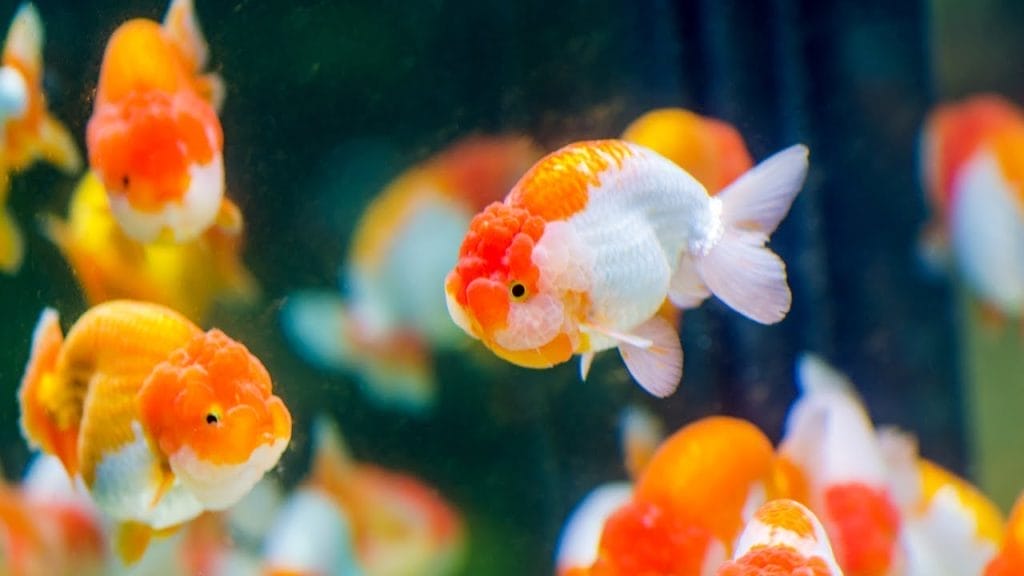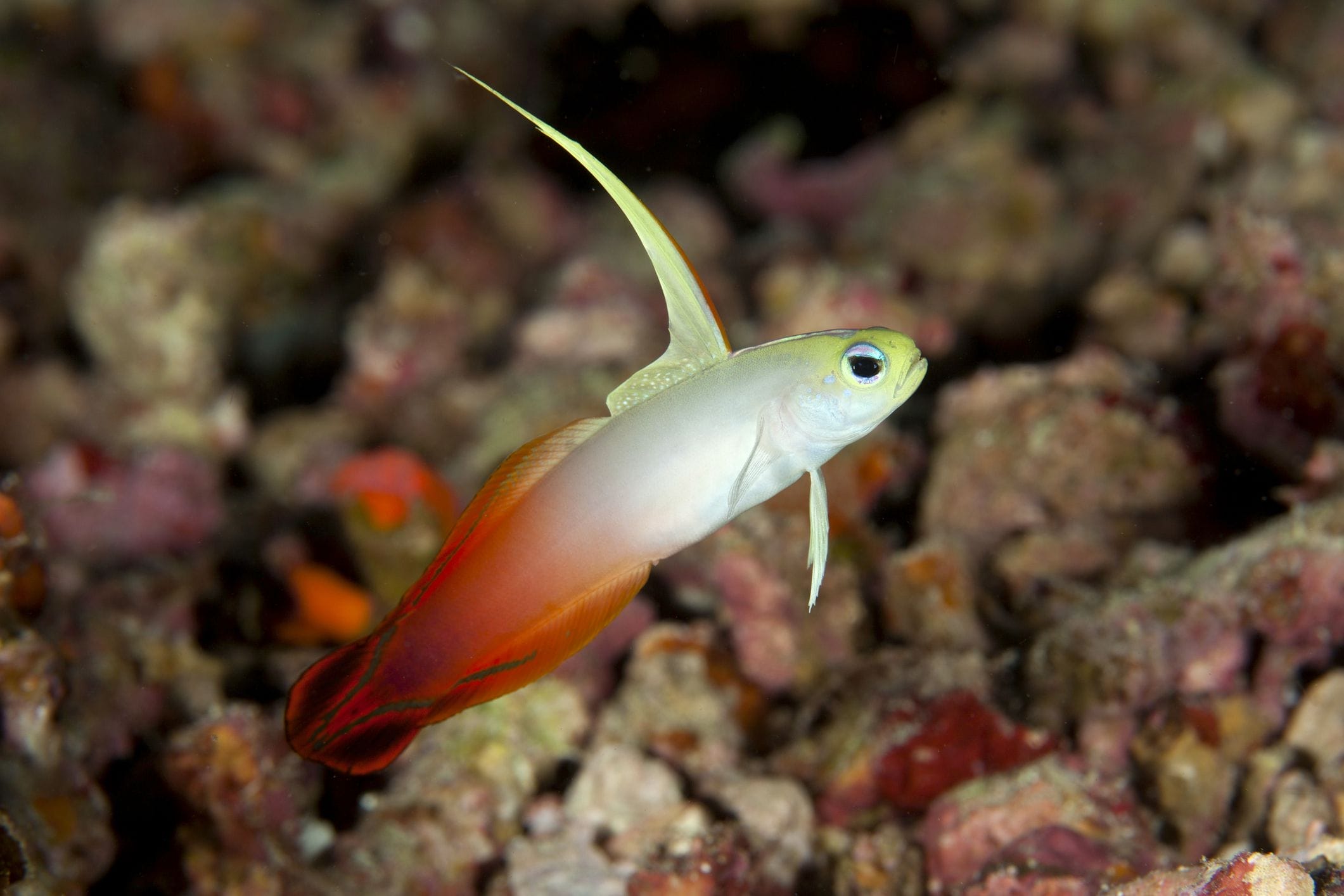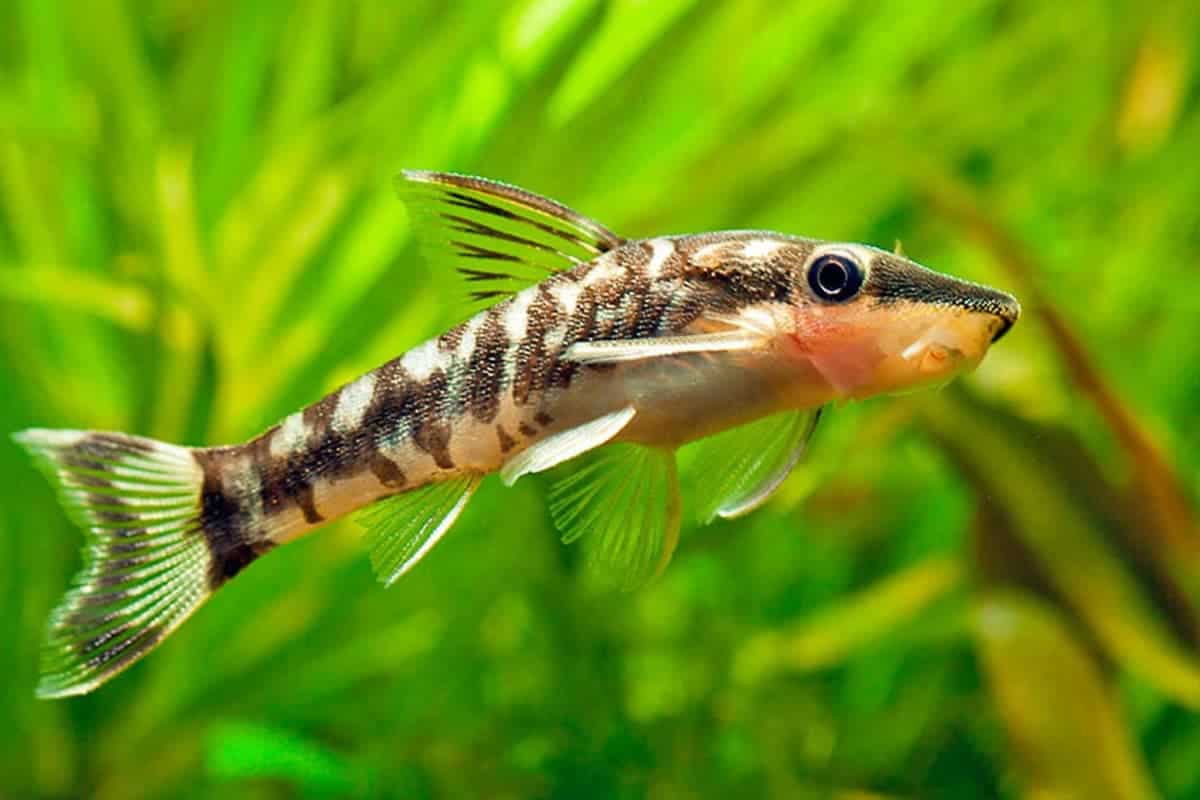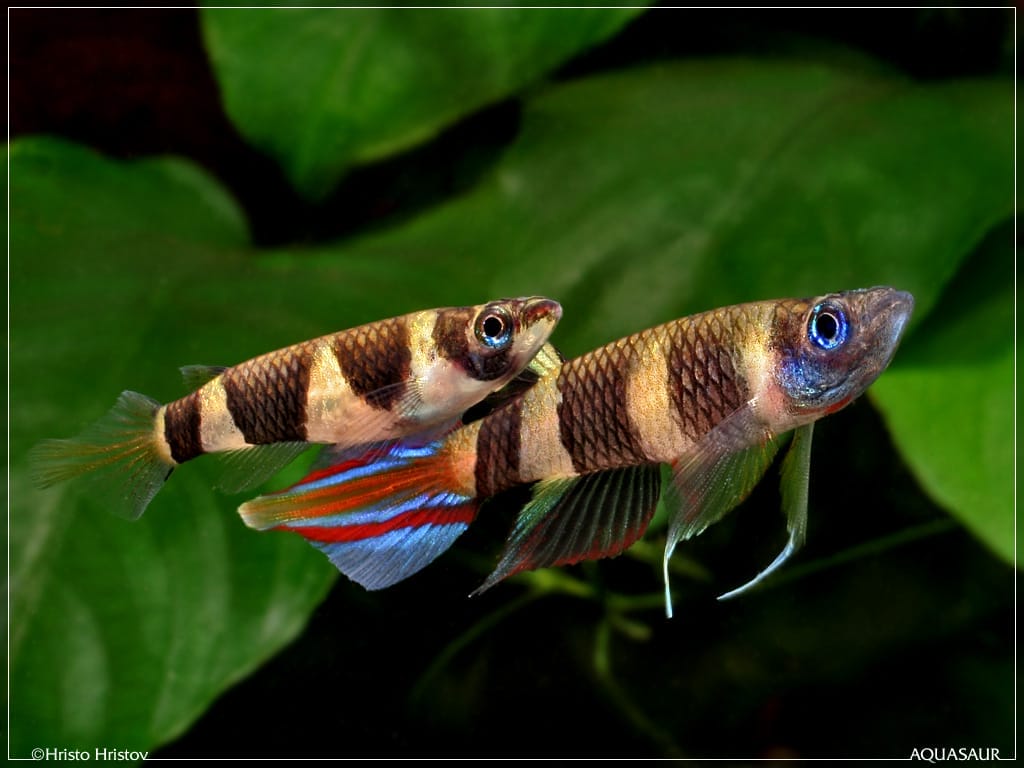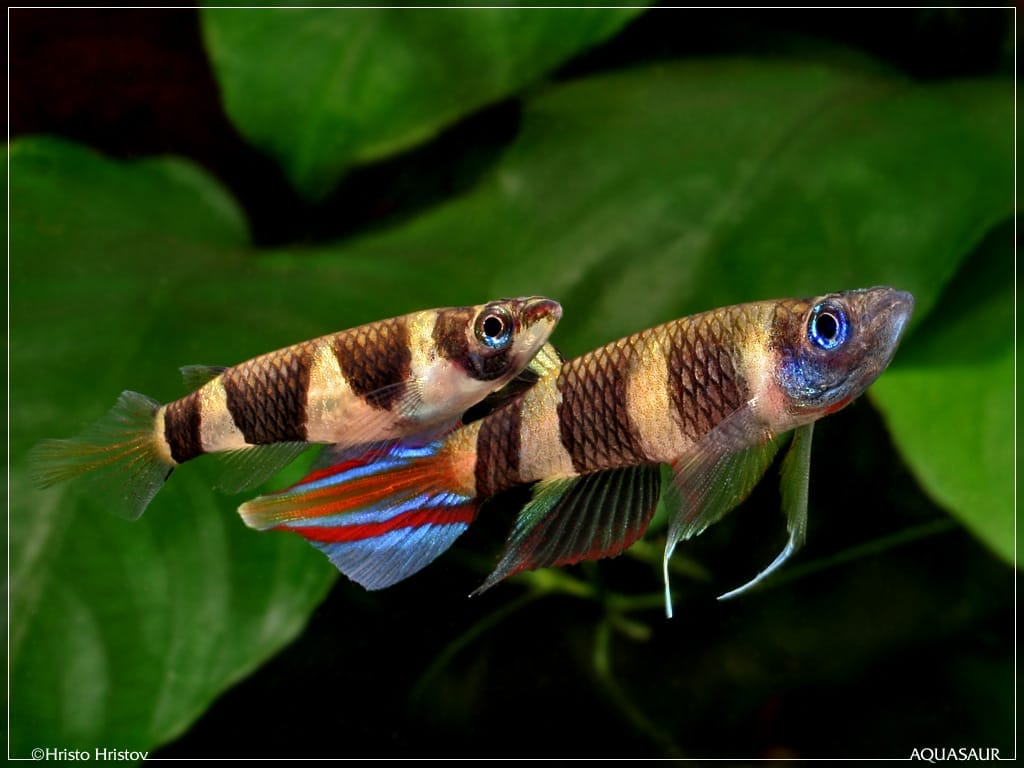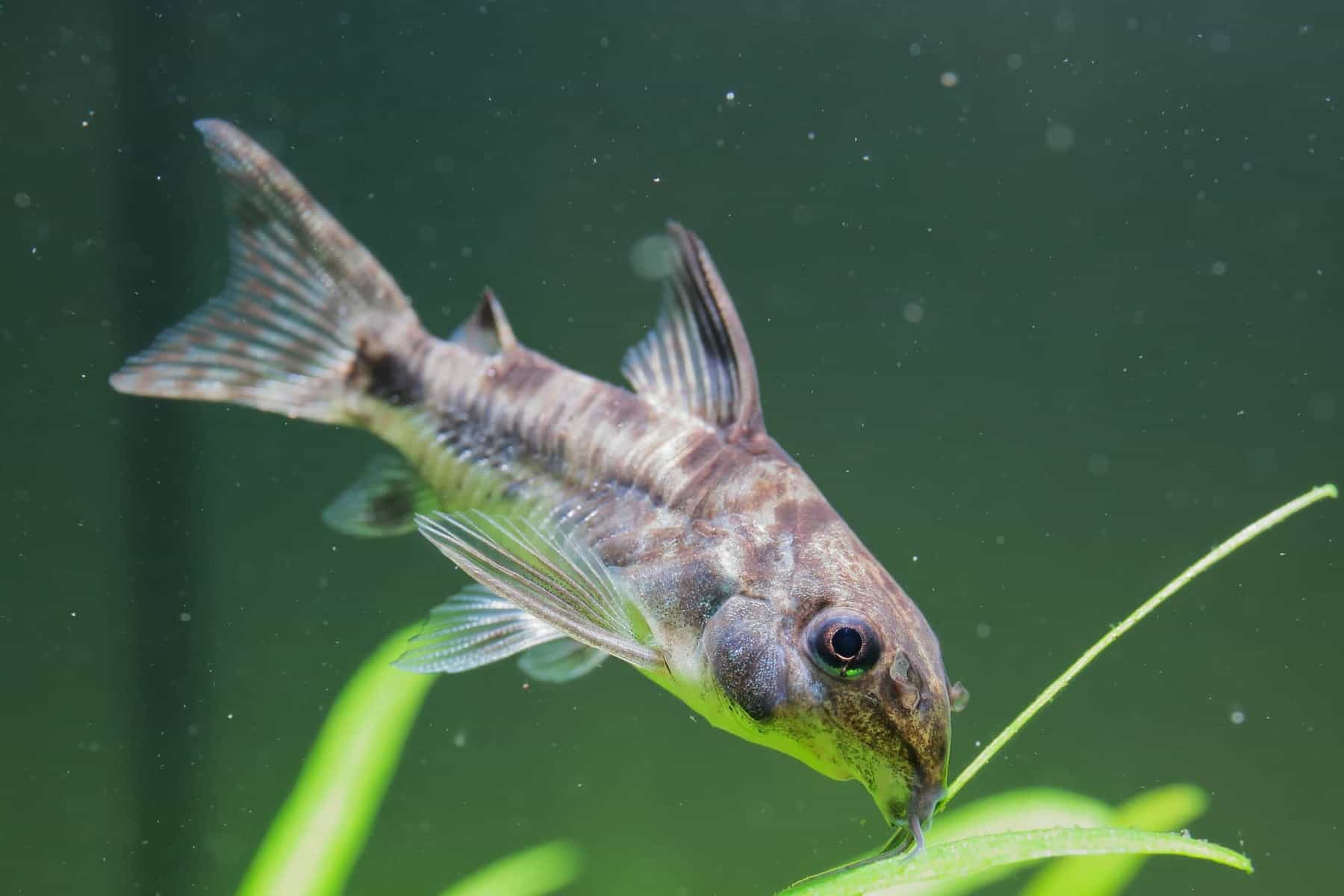
Polypterus Ornatipinnis: A Stunning Aquarium Species
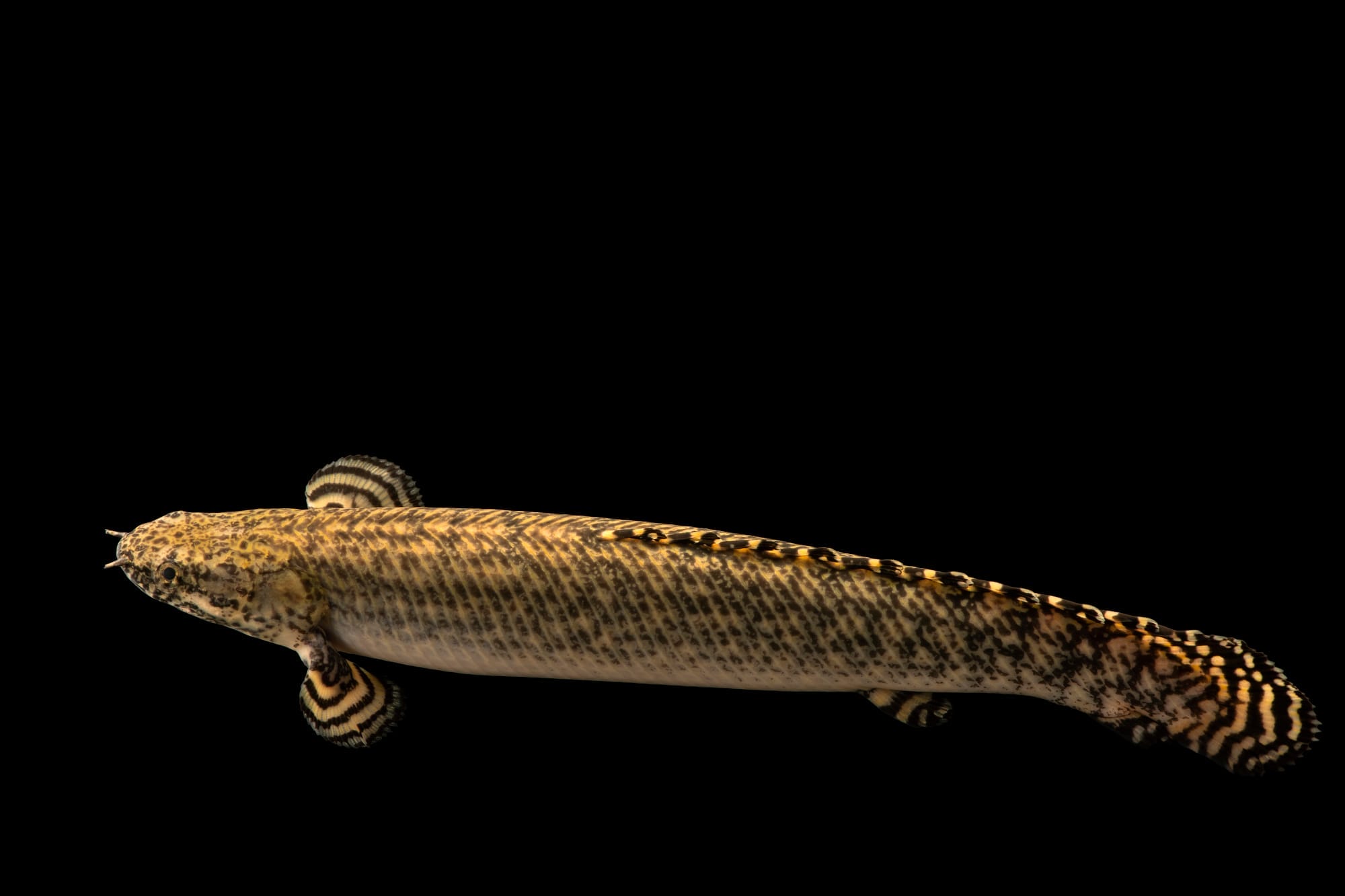
Polypterus ornatipinnis, generally called the Ornate Bichir, is a fascinating freshwater species that people like to keep in aquariums. Coming from the freshwater rivers and lakes in Central Africa, these ancient fish catch attention with their prehistoric looks, special physical features, and beautiful colors. With this guide, I want to help both new and experienced aquarium fans understand how to take great care of these interesting fish.
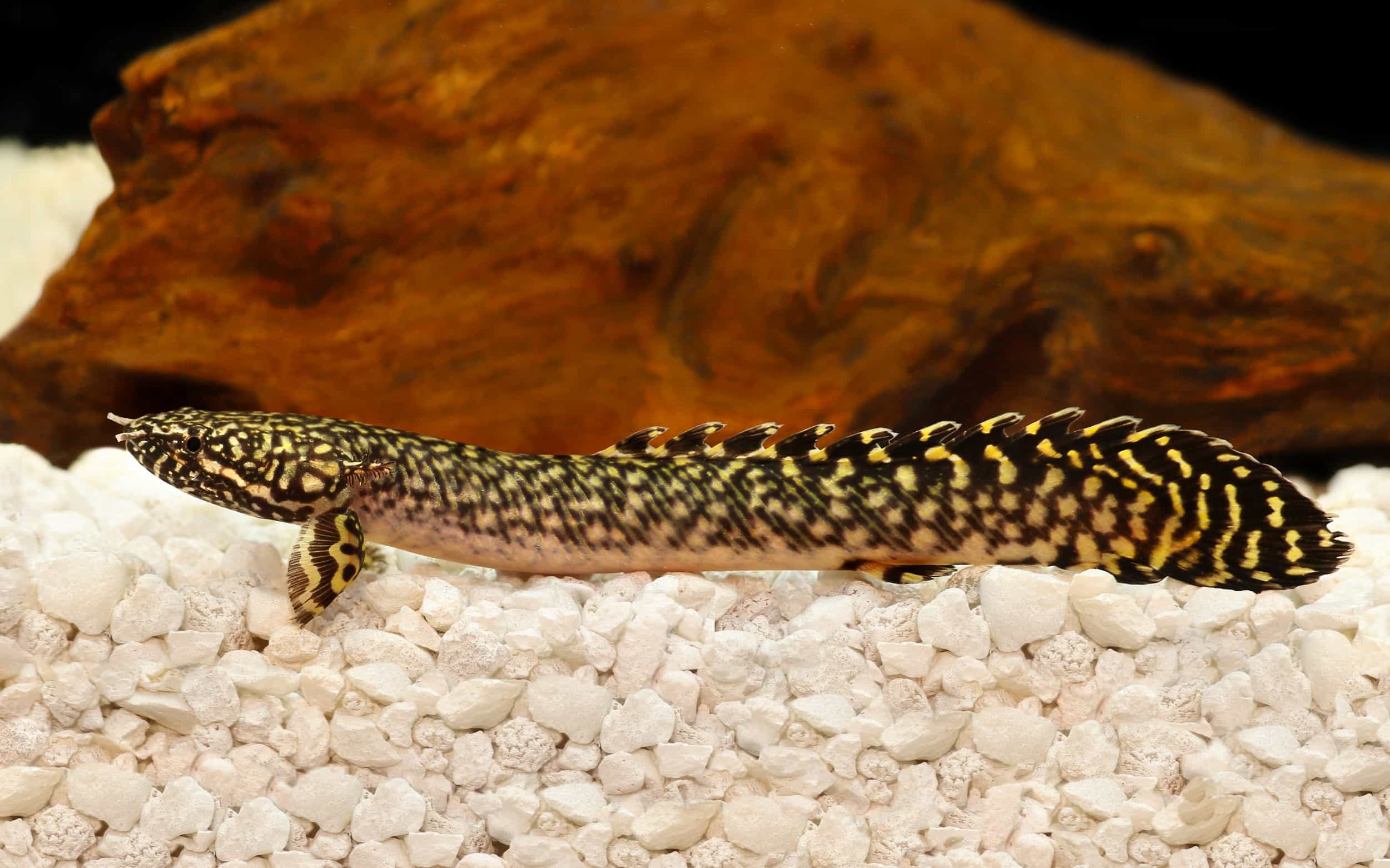
Read More : https://realacas.com/the-most-aggressive-freshwater-fish/
Understanding Polypterus Ornatipinnis
The Ornate Bichir is part of the Polypteridae family, which is a group of fish often called “living fossils” because they have been around for a long time and look a lot like their ancient relatives.
With their long bodies, unique dorsal finlets, and a lifespan reaching up to 15 years when cared for in tanks, these fish truly combine a sense of ancient history with a modern charm.
For keeping Polypterus ornatipinnis healthy in an aquarium, knowing their special needs is important. They do best in large tanks that can replicate their natural surroundings, including a soft sandy substrate, plenty of places to hide, and gentle lighting. Additionally, these fish are carnivorous and should be fed a diet of live or frozen foods, such as bloodworms and brine shrimp. It is also important to maintain good water quality and perform regular water changes. For more specific care instructions, it is recommended to consult a pinocchio shrimp care guide or seek advice from experienced aquarists.
Origin and Natural Habitat
The Ornate Bichir is found only in the freshwater areas of Central and East Africa. The fish lives across the Congo River Basin, which is a large system of rivers and streams going through thick rainforests. Lake Tanganyika, the longest freshwater lake in the world, is also important as a home for this special fish.
In these places, the Democratic Republic of Congo is essential for giving the Ornate Bichir the right type of environment. The fish tends to like slow-moving or still waters with a lot of plants, such as swamps, marshes, and shallow parts of big rivers and lakes.
The habitat of the Ornate Bichir is full of life, providing plenty of chances for this predatory fish to eat. From insect larvae and crustaceans to smaller fish and amphibians, their diet shows the richness of what’s around them.
Distinctive Features and Physical Characteristics
The Ornate Bichir is famous for how beautiful it looks and its interesting body features. With its long, eel-like form, it usually grows between 18-24 inches in places where it is kept. It has thick, diamond-shaped scales that give it a unique armor-like look. Because of its noticeable upper jaw that sticks out a bit past the lower one, it is placed in the group of “upper jaw bichirs.”
With additional appeal, this type of bichir has a line of dorsal finlets on its back that make it look like the spines of ancient animals. These finlets, along with its strong tail, help it move very well through thick plants and sediments. The anal fin is important for both pushing through the water and for reproduction, as male bichirs have a wider anal fin than the females.
As for the young Ornate Bichirs, they show a fascinating throwback from evolution with the presence of external gills, similar to what you would see in salamander larvae. Over time, these gills fade away as the fish grow older, being replaced by lungs that help them breathe air. This amazing change allows them to live in places where there is little oxygen and even stay out of water for short times.
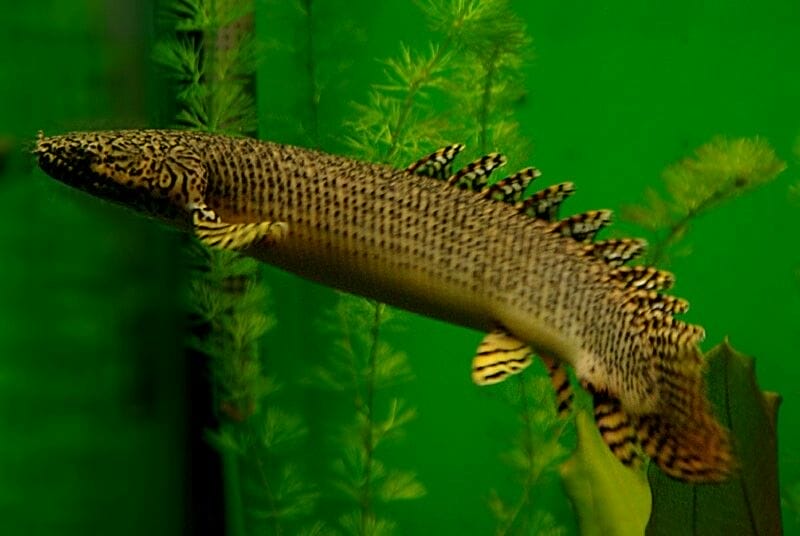
Setting Up the Ideal Aquarium
When building a home for the Ornate Bichir, it’s really important to think about their needs and behaviors. In an aquarium, having enough space is key. You should aim for a size of at least 6 feet long, 2 feet wide, and 2 feet tall to fit their grown size and energetic nature.
For the aquarium, designing it carefully is a must. It should resemble their natural habitat, using a soft sand substrate at the bottom. Including smooth rocks, some driftwood, and a mix of live or artificial plants can help create the right feel. Since these fish enjoy hiding, you should add plenty of hiding spots, especially since they tend to be shy during the day.
Recommended Tank Size for Polypterus Ornatipinnis
The Ornate Bichir, like many members of the Polypteridae family, requires a spacious aquarium to thrive. Their active nature and potential to reach impressive sizes necessitate a tank that provides ample room for swimming, exploring, and establishing territories.
A tank size of at least 6 feet in length, 2 feet in width, and 2 feet in height is recommended for a single adult Ornate Bichir. This translates to a minimum tank capacity of 180 gallons. Keep in mind that larger tanks are always preferable, as they provide more stable water parameters and allow for the addition of tank mates.
Here is a helpful table summarizing recommended tank sizes:
| Number of Ornate Bichirs | Minimum Tank Size |
| 1 | 180 gallons (6 ft x 2 ft x 2 ft) |
| 2 | 240 gallons (8 ft x 2 ft x 2 ft) |
| 3+ | Consider a custom-built aquarium to provide adequate space |
Water Parameters and Conditions
Maintaining clear water quality is very important for the health and happiness of Ornate Bichirs. In water, they do best when the pH is between 6.0 and 8.0, with slightly acidic to neutral pH being preferred. The ideal water hardness should stay between 5 to 25 dGH.
Temperature matters a lot too, with the best range for Ornate Bichirs being from 77°F to 82°F (25°C to 28°C). Keeping the temperature steady in this range is important because sudden changes can stress the fish and weaken their immune systems.
To keep water parameters stable, having a good filtration system that can support these big, meat-eating fish is necessary. Carrying out regular water changes is important as well, with a recommended water change of 25% every 2-3 weeks.
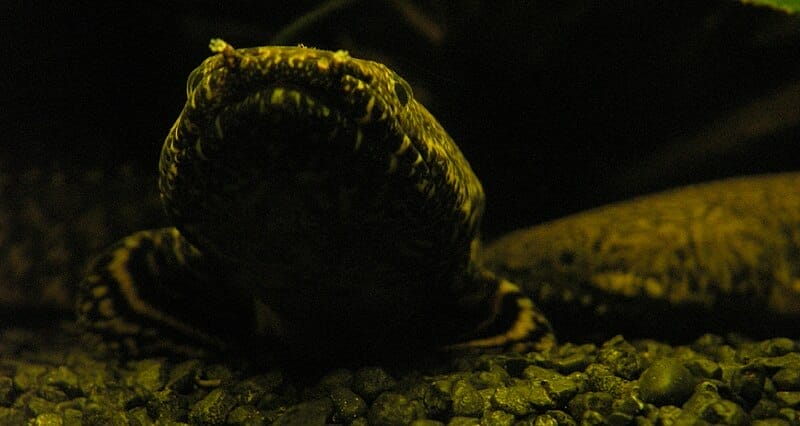
Diet and Nutrition
As obligate carnivores, Ornate Bichirs need a protein-rich diet to do well in captivity. In the wild, they mostly eat insects, crustaceans, worms, and small fish that live in their bottom habitats.
In an aquarium, it’s important to try to match this variety in their diet for their health and happiness. Through a mix of high-quality foods, you can make sure they get the necessary nutrients. You can include live, frozen, and prepared foods in their meals.
What to Feed Your Polypterus Ornatipinnis
Providing a varied and healthy diet is key for the well-being and lifespan of your Ornate Bichir. Due to their carnivorous nature, they need a diet high in protein that reflects what they would eat in the wild.
For live foods, offering them can truly enhance their natural hunting instincts while giving them important nutrients. You can consider options like earthworms, insect larvae such as mosquito larvae and bloodworms, small feeder fish including guppies or minnows, and small crustaceans like prawns or ghost shrimp, which are all tasty and packed with nutrition.
While there are many advantages to live foods, you should always make sure they’re from trustworthy sources to lessen the chance of bringing in parasites or diseases into your aquarium. Alternatively, frozen foods such as bloodworms, brine shrimp, mysis shrimp, and krill are convenient and safe choices.
Feeding Schedule and Dietary Tips
Creating a regular feeding routine is important to keep your Ornate Bichir healthy and happy. For juveniles, which are smaller and grow quickly, feeding them several times a day is beneficial. By providing small live foods like baby brine shrimp, daphnia, and mosquito larvae 2-3 times daily, they will get enough nutrition for healthy growth.
When they grow older, you can feed them less often. Adult Ornate Bichirs can typically eat once every other day or even every 2-3 days, based on how active they are and how big their meals are. You should avoid overfeeding them because it can cause obesity, poor water quality, and other health problems.
Along with a consistent feeding schedule, changing up their diet is also crucial. By offering a variety of live, frozen, and prepared foods, like high-quality sinking pellets made for carnivorous fish, they will have a balanced diet. By regularly checking how they respond to feeding and adjusting the food quantities as needed, you can stop them from overeating and maintain good water quality.
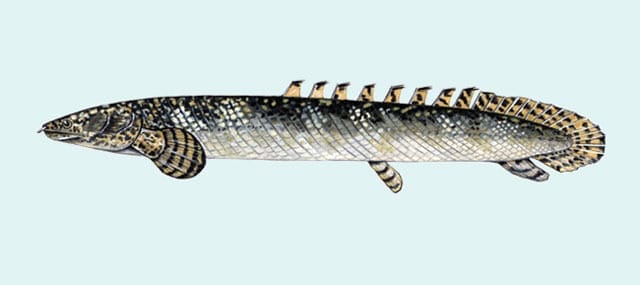
Health and Wellness
Ornate Bichirs are usually tough fish, but like other aquatic animals, they can face certain health problems. By offering a proper environment with clean water, a good diet, and low stress, you can help keep them healthy.
For keeping an eye on their health, regular observation is important to catch any sickness early. Many health issues in Ornate Bichirs can be parasitic infections, bacterial infections, and fungal diseases. If you see any strange behaviors like tiredness, not eating, or unusual swimming, getting veterinary help right away is very important.
Common Health Issues and Prevention
While Ornate Bichirs are usually strong fish, they can have health issues too. With regular care and knowledge about these common problems, you can help keep them healthy.
One very common issue that Ornate Bichirs face is ich. This is a disease caused by a tiny, contagious parasite. Its signs are white spots on their body, fins, and gills, along with them rubbing against things. You can treat ich with products that most aquarium shops sell.
Bacterial and fungal infections might also happen if the water quality gets worse or if the fish feel stressed. For preventing these problems, regular water changes, good filtration, and a steady aquarium environment are very important. It’s also a good idea to quarantine new fish before adding them to your main aquarium. This way, you can reduce the chance of spreading any diseases.
Regular Care and Maintenance
Maintaining good water quality is really important for the health and long life of Ornate Bichirs. By having a regular maintenance routine, you can make sure the aquatic environment stays clean and supports their well-being.
Performing water changes every 2 to 3 weeks is vital. This helps get rid of extra nitrates and other dissolved organic substances that could harm the water quality. It’s a good idea to change 25-30% of the total tank volume. Make sure to use dechlorinated water that is the same temperature and pH as the aquarium.
Along with water changes, remember to clean the substrate regularly with a gravel vacuum. This helps take away uneaten food, fish waste, and other debris that might cause spikes in ammonia and nitrite. Keep in mind that Ornate Bichirs can breathe with both gills and a primitive pair of lungs. Thus, it’s important to have a small space between the water surface and the aquarium lid to let them access atmospheric air.

Compatibility and Tank Mates
Ornate Bichirs are usually calm fish, but because of their size and hunting behavior, it’s important to think carefully about what fish to keep with them. Due to their tendency to eat smaller fish, you should avoid putting them with any fish that can easily fit in their mouths.
In a suitable environment, you can introduce other large and peaceful fish that like the same water conditions. Also, it’s crucial to have enough space and hiding spots in the aquarium so that all the fish can feel safe and reduce fighting over territory.
Ideal Tank Mates for Polypterus Ornatipinnis
Choosing the right tank mates for Ornate Bichirs needs some thought about their behavior, size, and the water settings they enjoy. To find tank mates, look for those that are calm, large enough to avoid being seen as food, and do well in similar water conditions.
With their origins in Africa, Synodontis Catfish make a great option. These gentle catfish that stay on the bottom are noted for their toughness and their unusual way of swimming upside down. Other good tank mates include bigger, friendly cichlids like Severums or Geophagus types, along with some larger South American tetras, like Buenos Aires Tetras.
When adding new tank mates, it’s best to put them into the aquarium at the same time. This way, you can help avoid the formation of a pecking order. Also, make sure to add plenty of hiding spots and keep an eye on how they interact for any signs of fighting or stress.
Species to Avoid in the Same Aquarium
Ornate Bichirs can live happily with many kinds of fish, but you should stay away from aggressive species or smaller ones that might become food. Small, gentle fish like Neon Tetras, Guppies, and Rasboras are vulnerable and could be eaten by your Ornate Bichir.
When it comes to aggressive fish, it’s best to not keep them in the same tank. You should avoid pairing your Ornate Bichir with cichlids, which include Oscars, Convicts, or Jack Dempseys, as they can be very territorial. These aggressive kinds can stress your Bichir and may even cause injuries due to fighting.
In addition, it’s a good idea to keep your Ornate Bichir away from invertebrates like shrimp and snails. Even though some bigger snails could be okay, most shrimp species would just be seen as a delicious snack. Always make sure to put the safety and health of all species in your aquarium first by looking into their compatibility before you add any new fish.
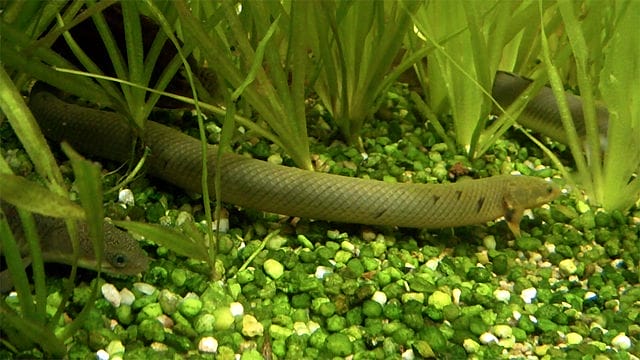
Breeding Polypterus Ornatipinnis
Breeding Ornate Bichirs in captivity can be hard but also very satisfying for committed fish keepers. To be successful, you need to really know their breeding habits, what kind of water they need, and how to take care of their fry.
To trigger their breeding behavior, you usually want to mimic the rainy season found in their natural habitat. This means you should slightly increase the water temperature, create a sense of more water movement, and provide a diet that is full of nutritious live foods.
Understanding Breeding Conditions
To create ideal breeding conditions for Ornate Bichirs, you must copy the environmental cues that encourage them to spawn in their natural surroundings. During the rainy season, which they often follow as seasonal breeders, their reproductive cycle connects to changes in water temperature, flow, and food supply.
In an aquarium, you can imitate these conditions by slowly raising the water temperature a little, boosting the water flow with a powerhead or adjusting the filter output, and giving them live or frozen foods often.
Having a big breeding tank filled with a soft, sandy substrate and lots of vegetation will help offer enough places for spawning and keep the eggs and fry safe. Regarding courtship behaviors, males and females swim side-by-side, with males sometimes nudging the female’s flank using their snout.
Rearing Fry: Tips and Best Practices
After your Ornate Bichirs have spawned, the task of raising the fry starts. The fry hatch from their eggs in about 3-4 days. During the first few days, they come out with yolk sacs attached to them that provide food.
When they have absorbed the yolk sacs completely, the fry will look for food. At this point, they need to be fed often with small, live foods like newly hatched brine shrimp, microworms, or infusoria.
In order to keep the fry alive, maintaining clean water is very important. Regular water changes of 10-15% of the tank volume every other day will help stop harmful toxins, like ammonia and nitrite, from building up.

